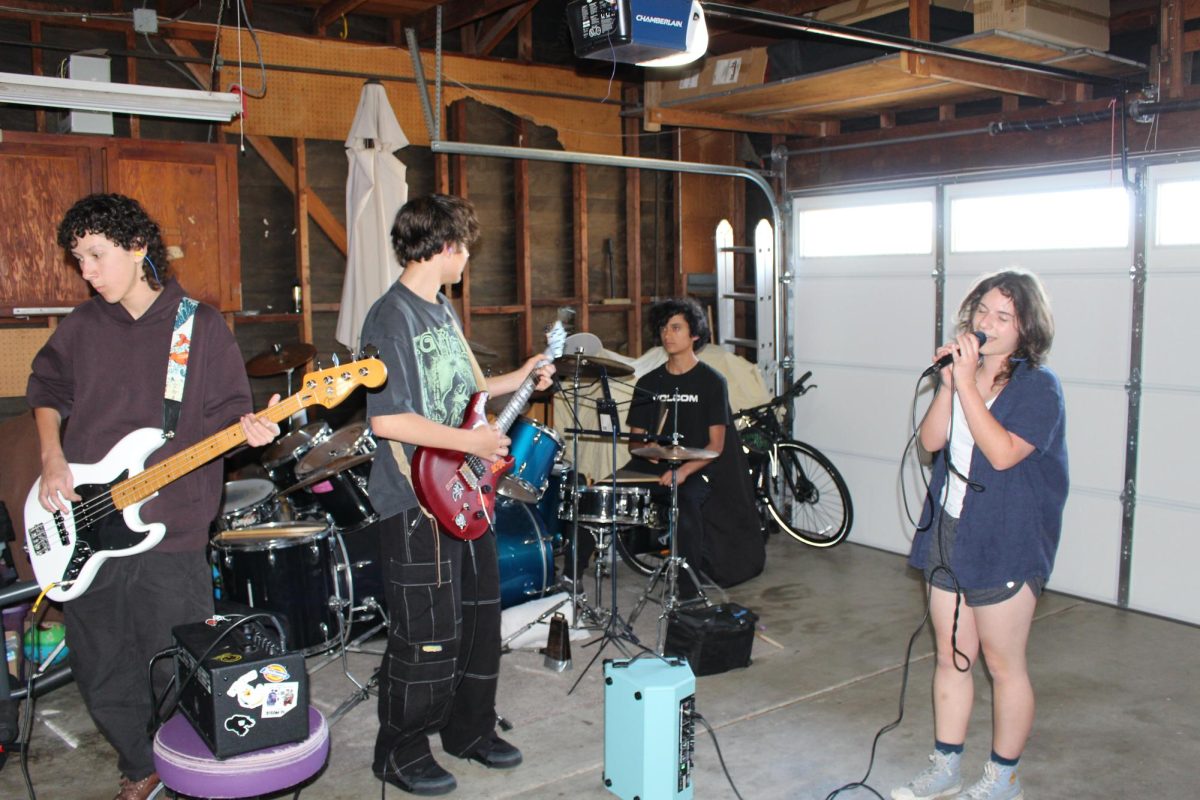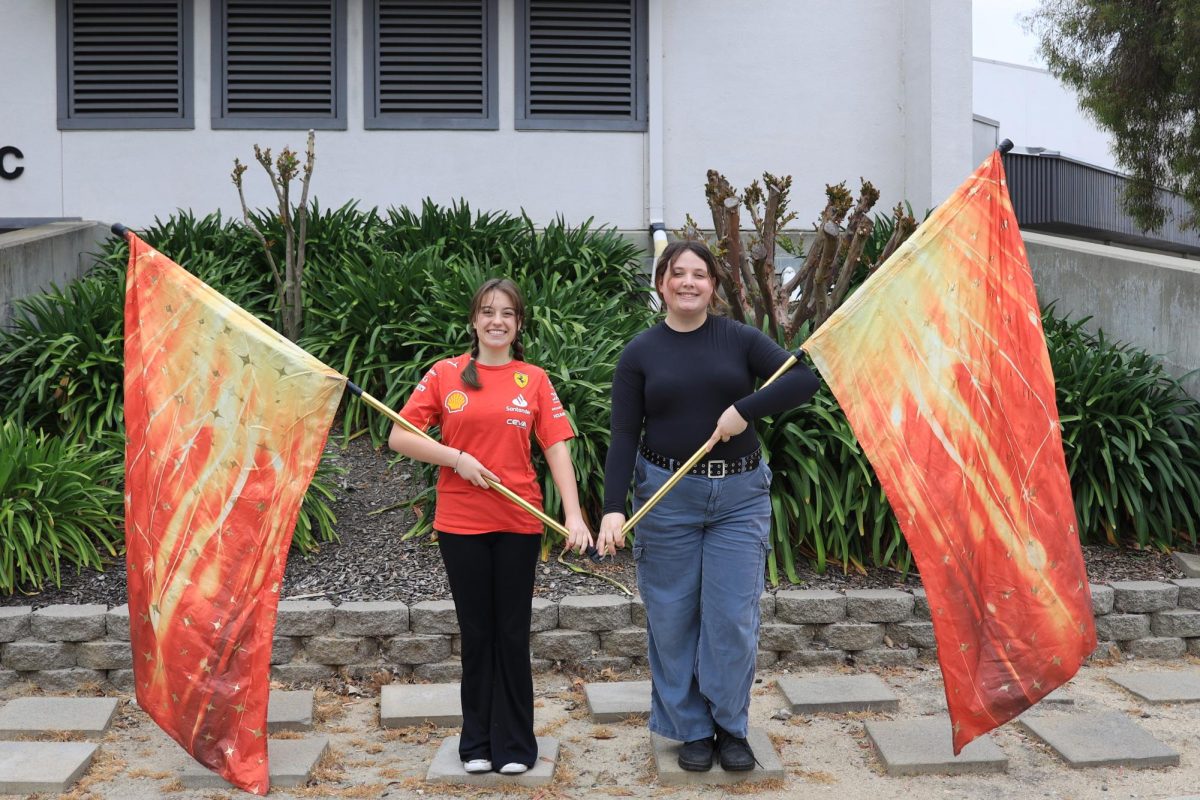by Jen Hight, online editor
The scene is set by a hanging window and a single bookcase, while a lonely door with a partial wall watches over the stage from the side. A long table sits center stage and around it 12 people are seated, all focused on their conversation in the middle.
This was the basic design of the play, “12 Angry Jurors,” that was produced at Cal High from May 16-18.
Director Laura Woods started it off in a new way, with a split cast, and it was very well done.Half of her cast came from her play production class, while the other half came from her theater 2 and 3 classes.
The difference between the two classes was immediately noticeable. The basic theater class was dead serious throughout the entire show, which is understandable seeing how hard it is to set a serious tone with comedic undercurrents.
Play production was able to create this tone. Of course, they have been putting on shows like this for years, while many of the students in the theater classes have only been acting for one to two years.
Even with the difference in skill level, all of the actors did well and put on a great show, and the plot was very moving.
The 12 characters are gathered together to take part in a murder trial and must decide if they believe a 19-year-old is guilty of murdering his father.
The jurors, none of whom had names, were taken into a room where they were to decide the verdict. Everyone thought the verdict would be unanimously guilty when the vote was taken.
But juror number eight, played by senior Brody Hoops, voted not guilty.
The rest of the play consisted of the other 11 jurors trying to convince him to pass a guilty verdict. Relying only on eyewitness accounts, the other jurors are convinced that the boy killed his father while juror number eight stands by his conviction.
Fighting back with logic and evidence taken directly from the crime scene, juror number eight manages to get the jury to unanimously vote not guilty by the end of the play.
But getting to that point was not easy. Racial and socio economic roles play a huge roll in the whole trial. The 19-year- old boy who was on trial grew up in the slums, and many of the jurors are convinced that because of this he committed the crime.
The subject of race is brought into the play when a Russian juror, played by senior Alexis Mantis and junior Jonathan Akkawi, decides on the not guilty verdict. The juror is questioned if they should even be allowed to be a juror because they are not American citizen.
Emotional outbursts and feelings are the main defense for convicting the boy, and juror number eight stands against them with calm, calculated logic which manages to save an innocent boy from jail.
Aside from the plot, the most striking part about the play was the stage makeup. Each actor was coated in gray face paint with emphasis on the cheekbones and eyelids.
This caused each minor facial movement to be very pronounced on stage, which allowed for very subtle facial movements to increase the drama of each spoken part.
To recreate the black and white movie “12 Angry Men” from which the play was adapted, the rest of the set and the costumes were in shades of black and white with gray dispersed throughout.
“12 Angry Jurors” put an emphasis on the basics of American democracy. It was able to show the audience that one person can speak out for what is right and cause a change for the better.
“12 Angry Jurors” was a big success and closed off Cal High’s drama production this year on a high note.





